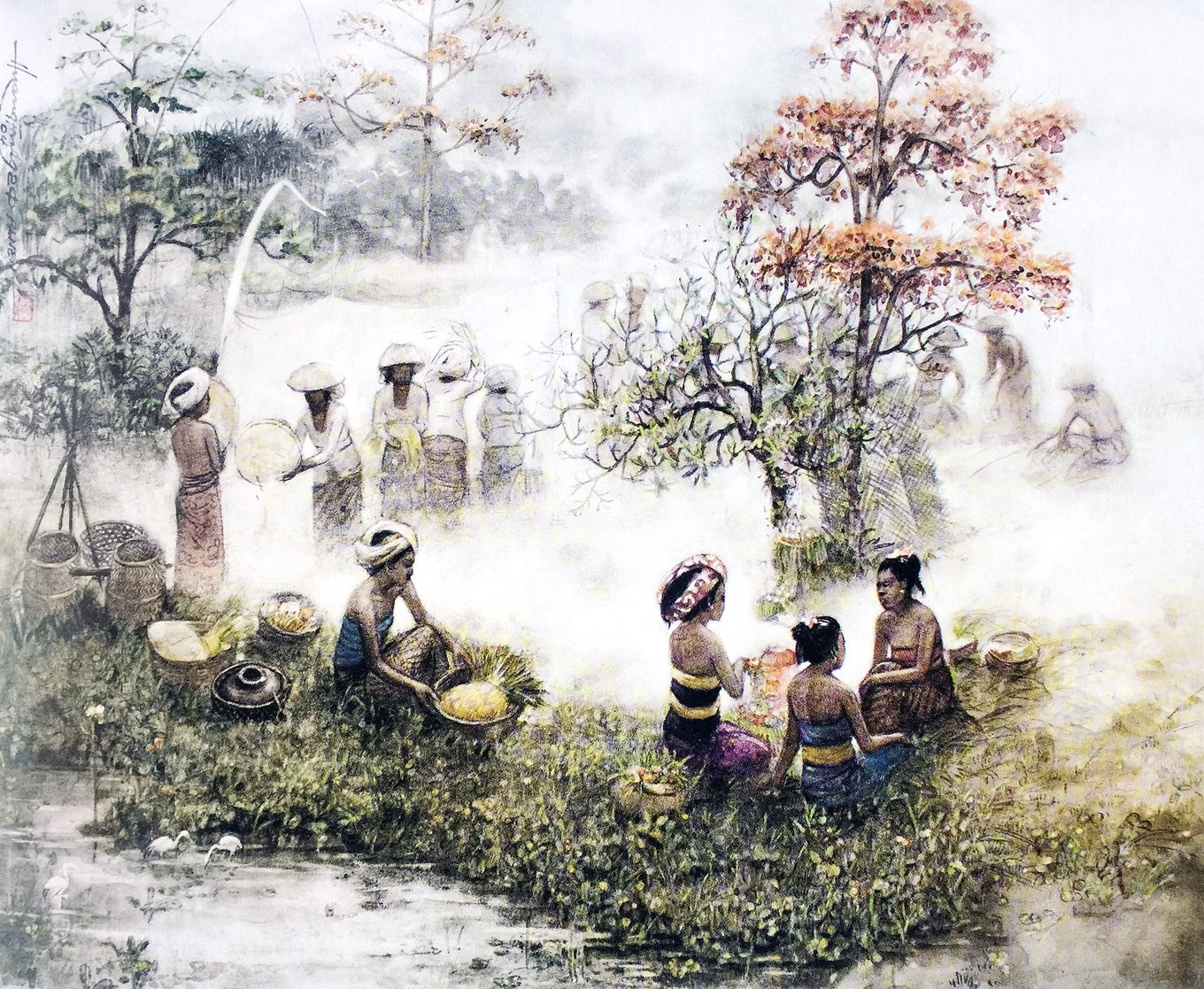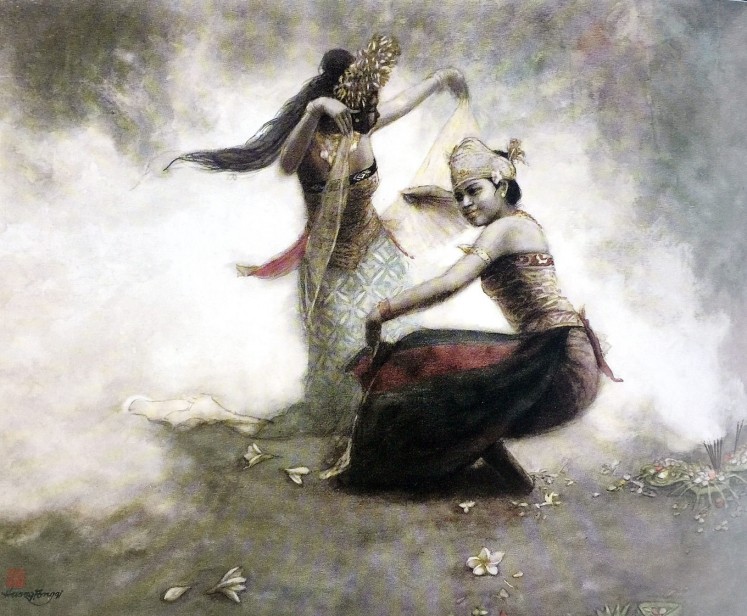Popular Reads
Top Results
Can't find what you're looking for?
View all search resultsPopular Reads
Top Results
Can't find what you're looking for?
View all search resultsHuang Fong: Painting heaven on Earth
Maestro painter Huang Fong, who turns 82 this year, celebrates his life and artistic journey by holding a solo exhibition at Balai Budaya in Central Jakarta.
Change text size
Gift Premium Articles
to Anyone
The exhbition kicked off in mid-May and features 50 of Fong’s paintings from throughout the different periods of his career.
Titled “Paradiso 50: Surga Yang Tercipta dari 50 Tahun Berkarya” (Paradiso 50: 50 Years’ Creation of Paradise), the exhibition represents the pleasant and happy ambience emanating from his works.
“I always try to take people to heaven through my paintings,” said Fong, who is also a tai chi instructor.
Born in Genteng, East Java on April 14, 1936, Fong is a seasoned artist who still engages in artistic, organizational and social activities despite his age.
He also has unique ways of introducing and promoting his works, including a video that shows how his old paintings are cleaned and brushed to keep them looking fresh and new.
“It is meant to make the paintings expose their heaven even clearer. Aren’t people obliged to clean their inner heaven in their pursuit of happiness?” remarked Fong.
Fong’s artistic journey began in early 1963, when he explored the island of Bali.
After returning to Java and working with a soft drink factory, bicycle shop and photo studio, he returned to Bali in 1967. He stayed in Ubud where he became acquainted with artists like Anton Huang, Abdul Azis, OH Supono, Tedja Suminar, Affandi and Hendra Gunawan.
From all the artists he met in Ubud, he had the closest affinity to Affandi and Hendra, who he considered his main motivators. His Balinese spiritual guru, on the other hand, was Ida Bagus Made Poleng.
“Bali’s long history of painting as well as its active and competitive environment of art just made me feel at home. Here, my creativity was stimulated to discover novelties in painting art,” said the painter, also known as the founder and head of an art studio, Sanggar Kambodja Bali.
Fong, as an important figure in the practice of painting techniques in Indonesia, made an innovation that brought him fame through his combination of three techniques in one canvas: the Chinese-inspired water color transparency technique, the Western-styled oil painting and the traditional Balinese painting method by color rubbing.
The material Fong uses include tempera and ink. His way of technical blending in paintings reached its maturity in 1975.
His works drew the attention of national and international art communities, and they have been displayed in galleries across the world, such as the Netherlands, South Korea, Japan, Taiwan, China, Hong Kong, Singapore and Malaysia.
Fong’s realist-impressionist paintings generate a strong esthetic appeal. With their monochromatic domination offering calm color nuances, some details are also apparent on particular sides.
In general, Fong’s paintings bear four themes.
First, they infuse life into objects because Fong loves to paint various natural objects, including flowers existing in his environment, which are subjected to selection in terms of visual sensibility.
Second, they adore the living. This theme exposes humans in portraitist poses and several wildlife species he is fond of. Here, he manages to present the beautiful designs of clothing in detail under the rays of sunlight. The resulting shadows are sometimes depicted in fascinating dark-light contrasts.
Third, they deal with nature and man. Such works place humans amid nature’s environment and habitat as well as communal customs. There are, among others, people harvesting in paddy fields and worshippers in front of a temple preparing for a religious ritual. This theme is mostly enhanced with clouds of mist, an exploration of esthetic moments that has added a typical atmosphere to Fong’s canvases.
And finally, his works build up drama. These paintings represent humans who will be, are or have been engaged in the creation of events. Balinese women performing the legong (royal court) dance and oleg tambulilingan (bumblebee) dance, men with their jaug dance, the mythological barong dance are only some examples of such drama.
While canvas water-color works are his signature, Fong also creates canvas oil paintings and uses charcoal on paper.
However, his different media have produced artistic pieces that are unified by the same thematic spirit: expressing gratitude to life with beautiful thoughts.
Consequently, Fong’s creations belonged to the Mooi Indie Baru (New Beautiful Indonesia) school in the Dutch East Indies era.
Fong’s other unique trait is that he does not want to sell many of his works, which explains why he keeps around 400 of his paintings.
In fact, collectors, galleries, art dealers and museums have since 1980 sought to collect some of them. Nyoman Rudana, who owns Rudana Gallery in Peliatan, Ubud, has complained about it.
“In the 1990s, I wanted to buy over a dozen of his paintings, but he wouldn’t sell them. Last year, again I revealed my interest [to buy his works], but still he declined to sell,” Rudana said.
Fong’s works are known to fetch high prices. His canvas water color paintings measuring about 100 centimeters by 150 cm can reach between Rp 200 million (US$14,250) and Rp 300 million apiece.
“I’m going to arrange all the paintings in my private museum,” said Fong, who intends to create his own “heaven” of paintings in his residence.













